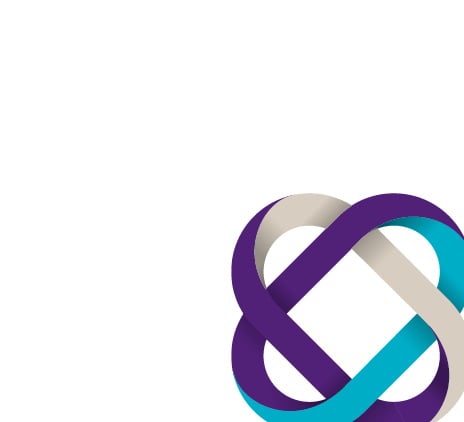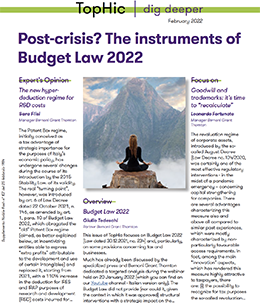-
Transactional advisory services
Find out more about the transactional advisory services of Grant Thornton Financial Advisory Services
-
Valuations
Find out more about the valuations services of Grant Thornton Financial Advisory Services
-
Mergers and acquisitions
Find out more about the merger and acquisition services of Grant Thornton Financial Advisory Services
-
Forensic and investigation services
Find out more about the forensic and investigation services of Grant Thornton Financial Advisory Services
-
Recovery & reorganisation
Find out more about the Recovery & reorganisation services of Grant Thornton Financial Advisory Services
-
Business risk services
Find out more about the business risk services of Grant Thornton Financial Advisory Services
-
Business consulting
Find out more about the business consulting services of Grant Thornton Financial Advisory Services
-
Capital market
Capital market
-
Corporate and business tax
Find out more about our corporate and business tax services.
-
Direct international tax
Find out more about our direct international tax services.
-
Global mobility services
Find out more about our global mobility services.
-
Indirect international tax
Find out more about our indirect international tax services.
-
Transfer pricing
Find out more about our transfer pricing services.
-
Litigation
Our lawyers and accountants can manage all defense measures provided not only by the Italian law, but also by EU regulations and conventions
-
Family business
Find out more about our Family business services.
-
Legal
The client can be assisted in every need and with the same care both on important operations or disputes and on simple matters

-
Back office outsourcing
Find out more about our Back office outsourcing services
-
Business process outsourcing
Find out more about our business process outsourcing services.
-
Compilation of financial statements
Find out more about our compilation of financial statements services.
-
Tax compliance
Find out more about our tax compliance services.
-
Electronic invoicing
Find out more about our electronic invoicing services
-
Electronic storage
Electronic storage is an archiving procedure that guarantees the legal validity of a digitally stored electronic document
-
Revaluation of corporate assets
Find out your civil and fiscal revaluation of tangible, intangible and financial assets
-
Human resources consulting
Find out more about our human resources consulting services.
-
Payroll
Find out more about our payroll services.
-
HR News
HR News the monthly information newsletter by Grant Thornton HR
-
Cybersecurity
GT Digital helps clients structure information security management internal functions, also through partially or totally outsourced functions
-
Agile and Programme Management
GT Digital provides support in the adoption and implementation of different portfolio management
-
Robotic Process Automation
Our “BOT Farm” can rely on digital workers able to help clients in routine activities, allowing employees to deal with more added-value activities
-
Data strategy and management
GT Digital can support clients in seizing the opportunities offered by Big Data, from the definition of strategies to the implementation of systems
-
Enterprise Resource Planning
We support clients in selecting the most appropriate ERP System according to their specific needs, helping them also understand licensing models
-
IT strategy
GT Digital supports clients in making strategic choices, identifying innovation opportunities, comparing themselves with competitors
-
IT service management
We can support with software selection and with the implementation of dedicated tools for the management of ICT processes
-
DORA and NIS 2
The entry into force of the DORA Regulation and NIS2 represents a major step towards the creation of a harmonised regulatory framework
The Patent Box regime, initially conceived as a tax advantage of strategic importance for the purposes of Italy’s economic policy, has undergone several changes during the course of its introduction by the 2015 Stability Law. of its validity.
The real "turning point", however, was introduced by art. 6 of Law Decree dated 22 October 2021, n. 146, as amended by art. 1, para. 10 of Budget Law 2022, which abrogated the "old" Patent Box regime (aimed, as better explained below, at incentivizing entities able to express "extra profits" attributable to the development and use of certain intangibles) and replaced it, starting from 2021, with a 110% increase in the deduction for IRES and IRAP purposes of research and development (R&D) costs incurred for the creation and development of eligible intangible assets.
This new Hyper-deduction regime of R&D costs - which is in line with the OECD recommendations contained in Action 5 "Countering Harmful Tax Practices More Effectively, Taking into Account Transparency and Substance" of the BEPS Project - is applicable to all subjects receiving business income and is subject, like the old Patent Box regime, to the exercise of a five-year irrevocable and renewable option.
Pending the issuance of one or more implementing measures by the Director of the Revenue Agency for the purposes of the concrete application of the new regime in question, this article will only provide some reflections and comments on some fundamental features of this new tax advantage.
Preliminarily, as stated in the explanatory report to Law Decree no. 146/2021, the new regulation aims to simplify and speed up the use of the benefit by taxpayers.
In fact, unlike the previous regime, which rewarded the profitability of eligible intangibles through a complex analysis and calculation (sometimes also resorting to complex and expensive ruling procedures), the new subsidy regime exclusively rewards investment in R&D regardless of income earned from eligible intangible assets and allows taxpayers to autonomously liquidate the benefit by means of a decreasing adjustment in the tax return, thus leaving the discussion with the tax authority to the possible subsequent audit phase.
What has been outlined so far probably suggests that, as it already happens with the tax credit for R&D activities pursuant to art. 1, paragraphs 198-206 of Law no. 160/2019, the attention of the Tax authority will no longer be on the allocation of costs and revenues in the virtual income statement that had to be drawn up to benefit from the old Patent Box, but on the admissibility and effectiveness of R&D expenses incurred, as well as on their relation to a specific eligible intangible.
It will therefore be essential to create and maintain adequate accounting documentation to demonstrate the validity of the costs on the basis of which the 110% increase was determined. In this regard, it is important to mention the reward regime that the legislator has recognized to those taxpayers who will prepare suitable documentation as indicated in a future provision of the Revenue Agency and indicate the possession of such documentation in the tax return relating to the tax period in which the benefit is used.
In particular, as it was provided for the previous Patent Box regime through self-calculation, in the event of a correction of the costs subject to a 110% increase during the audit phase, the application of the fine for false declaration pursuant to art. 1, para. 2, of Legislative Decree no. 471/1997 (which ranges from 90 to 180 percent of the higher tax due or of the difference in the credit used) is excluded if the companies concerned provide the aforementioned documentation during the tax audit.
Furthermore, considered the confirmed possibility to combine the tax credit for R&D activities with the new regime under analysis, such non-application of the fine should nevertheless give greater appeal to the new hyper-deduction system of R&D costs rather than to the tax credit for R&D activities, also in consideration of the recent interpretative issues related to the qualification - in terms of "non-existent credit" or "undue credit" - of the tax credit for R&D activities that should prove to be totally or partially undue.
The introduction by 2022 Budget Law of the recapture mechanism was also extremely significant, allowing the recovery of the unused tax benefit in relation to R&D expenses incurred for the creation of the eligible intangibles during the eight tax periods prior to the one in which the qualification as industrial property was obtained. In this regard, however, it will be essential to wait for indications aimed at defining certain application aspects of the new regulation, such as, for example, the moment in which industrial property is deemed as "obtained" for the purposes of the regime in question.
If what has been observed so far could be welcomed by taxpayers, the fact that the repeal of the old Patent Box could significantly reduce our country's ability to attract investments in intangible assets and induce the relocation abroad of those assets cannot be ignored. intangible assets currently located in Italy.
This is due both to the structure of the new subsidy regime and to the relative narrow objective scope. With reference to the latter, in fact, with respect to the provisions of the Legislative Decree n. 146/2021, 2022 Budget Law has excluded trademarks and processes, formulas and information relating to experiences acquired in the industrial, commercial or scientific fields (know-how) from the list of eligible intangible assets.
This exclusion, with particular regard to trademarks, undoubtedly represents a heavy penalty for taxpayers operating, for example, in the fashion industry, where brands allow companies to distinguish themselves from competitors and to convey their goods, services, values and experiences to customers.
But companies operating in the manufacturing sector are affected (negatively) by the changes introduced by 2022 Budget Law, too; in fact, these base their success on know-how, which, obviously for strategic and competitive reasons, is generally not patented.
In this regard, it should be noted that such exclusions were, however, predictable, taking into account, on the one hand, the OECD recommendations contained in Action 5 of the BEPS Project, and aimed at inviting Member states to exclude trademarks and know-how from their subsidy regimes, since they can give rise to distorted situations that could be interpreted as "harmful tax competition" and, on the other hand, of the fact that the Italian legislator had already intervened with art. 56 of law Decree no. 50/2017 to realign, though partially, the previous legislation to the aforementioned OECD recommendations, removing trademarks from the objective scope of the previous Patent Box regime.
On the other hand, it will instead be important to evaluate the expected benefit deriving from the application of the new Hyper-deduction regime for R&D expenses for those companies that do not currently have particular (eligible) intangible assets but intend to develop them through significant R&D investments, as well as for technological and pharmaceutical companies which incur significant R&D expenses on a recurring basis.

